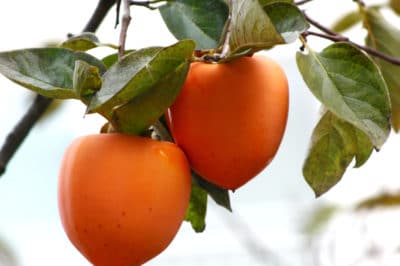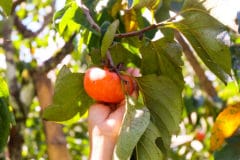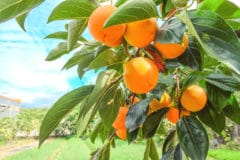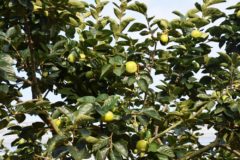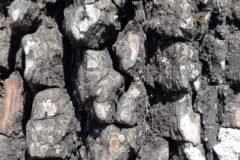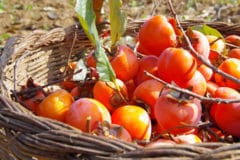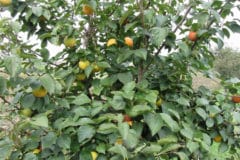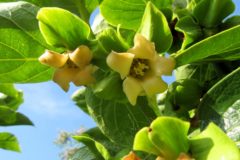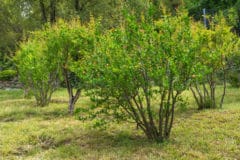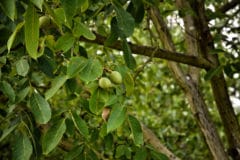How Hardy Are Persimmon Trees?
American and Oriental persimmons (Diospyros virginiana, Diospyros kaki) trees grow in USDA plant hardiness zones 4 through 9 or 7 through 10, respectively. The American trees tolerate winter temperatures as low as -30°F (-34.4°C). Oriental persimmons handle lows between 0°and 35°F (-17.7 °and 1.6°C), depending on cultivar.
What’s a Good Persimmon Planting Site?
The best persimmon planting site has:
- At least six hours of direct daily sun.
- Good drainage to prevent waterlogged roots.
- Loamy or sandy loam soil with a pH between 6.0 and 7.0.
- Room enough to maintain a 4-foot, weed-free zone around each tree.
- Room for a male tree to pollinate your females.
Expert gardener’s tip: Short on space? Plant self-pollinating cultivars such as ‘Fuyu’ or ‘Prok.’
When Should I Plant Persimmon Trees?
In spring or early fall, depending on your hardiness zone. Most nurseries ship their bare-root trees between December and March. Get them in the ground as quickly as possible.
How Do I Care for Persimmon Trees?
Persimmon roots spread slowly, so water first-year trees in sandy soil twice weekly and those in loam or clay once weekly.
Give older trees at least 1 inch of weekly water — more during drought. Slow, deep watering with a drip system or soaker hose is best.
Limit fertilizer to trees growing less than 12 inches per year. In their first two years, apply a balanced, 10-10-10 fertilizer at the manufacturers’ recommended rate. Excessive nitrogen causes fruit drop, so from the third year on, use a formula with less than 5 percent nitrogen.
Five to 10 pounds (2.7 to 5.4 kg) of organic compost spread around their trunks in late winter is all the soil supplement vigorous persimmons need.
What about Pruning?
In their fourth year, prune each tree to create a spiraling scaffold of five or six evenly spaced branches. They’ll support your future harvests.
Prune fruiting persimmons to:
- Remove growth beneath the bottom scaffold branch and all but two or three smaller branches growing from the rest.
- Remove crossing, diseased or damaged branches.
Finally, for easier harvesting, top Oriental persimmons to a manageable size — about 10 or 12 feet — every few years. Ripe American persimmons simply fall to the ground.
